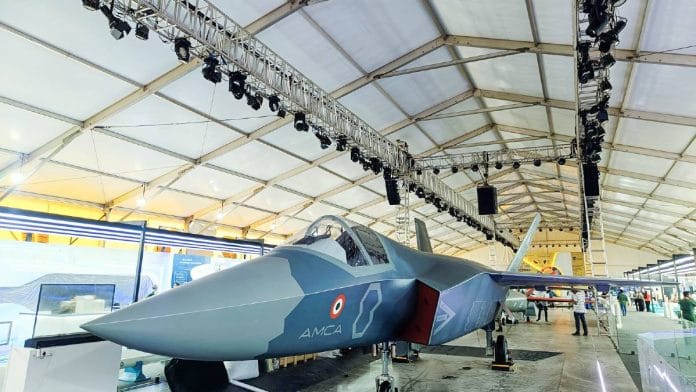New Delhi: Amid the debate over the Indian Air Force’s fighter jet acquisition strategy, a survey by The Takshashila Institution indicates higher public support in India for international collaboration in critical technologies than for indigenous development.
Findings were published last month by the Bangalore-based centre for research and education in public policy. The survey was conducted in November-December last year.
It examined India’s approach to high-tech geopolitics and sought responses a varied array of stakeholders, including private sector representatives, defence and security personnel, government officials, students, academics and think tank members.
The private sector comprised the majority of the 502 respondents at 40.2 percent, followed by defence and security personnel at 21.5 percent. A total of 10 questions were asked, ranging from broad-based themes such as technology and partners to specific ones on technology domains such as semiconductor and AI.
To the query ‘what should be India’s highest priority for technology development in the next decade’, the majority leaned towards international collaboration rather than self-reliance, challenging the dominant ‘Atmanirbhar Bharat’ narrative in strategic circles.
As many as 43.8 percent of respondents advocated for India’s collaboration with nations such as the US, the UK and France to expedite technological advancement, while 36.1 percent preferred development of indigenous technology, regardless of global competitiveness.
Findings come in the wake of a debate over projects including the Advanced Medium Combat Aircraft (AMCA), a 5.5-generation stealth fighter presently under development by Aeronautical Development Agency under Defence Research and Development Organisation (DRDO) in collaboration with Hindustan Aeronautics Limited (HAL) and private industry partners.
The survey considers AMCA programme as a case study on whether India should persist with ambitious indigenous initiatives, select established platforms such as the F-35 or Su-57, or engage in co-development and joint manufacture with reliable international partners.
“In the case of stealth fighters, the Indian government should choose between indigenous AMCA and co-development/co-production of next-gen aircraft,” the survey report states.
Given the IAF’s fighter squadron shortfall (just 31 against the approved 42.5), this argument becomes more urgent and emphasises the requirement of quick combat capability upgrades.
A modest yet relevant 16.9 percent of respondents asserted that the Indian government should refrain from undertaking a direct role in establishing technological development projects, advocating alternatively for the private sector to lead in such decisions.
Meanwhile, merely 3.2 percent supported the direct acquisition of technologies from foreign nations without joint production or technological collaboration.
The survey additionally analysed public preferences for international partners in the domain of critical technologies, including defence.
Up to 45.4 percent of respondents picked the US as India’s principal partner in this area, followed by Israel at 20.5 percent, France at 18.1 percent and Russia at 12.9 percent, with China receiving a mere 3 percent of picks.
Choices differed markedly among stakeholder groups. Among the surveyed defence and security personnel, Israel emerged as the preferred partner at 35.2 percent, followed by the US at 31.5 percent and Russia at 19.4 percent. France scored barely 12 percent in this category, indicating a pronounced inclination within India’s defence sector towards Israeli technologies, alongside a persistent dependence on Russian equipment.
The survey also sought to comprehend how Indians view the components that construct the nation’s overall power in the forthcoming decade.
Only 14.1 percent of respondents prioritised military power as the most significant among military, technological, economic, soft and talent-based power. Within the “government” stakeholder category, only 10 percent prioritised military strength as their primary priority.
Meanwhile, soft power received the lowest ranking at 13.5 percent.
On the contrary, 35.6 percent of those surveyed recognised economic power as India’s primary source of national power, succeeded by talent power at 21.7 percent and technological power at 14.9 percent.
The comparatively elevated importance of talent over technology indicates an increasing acknowledgement that human capital and trained labour would be crucial in determining India’s competitiveness in burgeoning high-tech sectors.
(Edited by Nida Fatima Siddiqui)
Also Read: SC ends years of denial & ambiguity, grants military nursing officers ex-servicemen status







At this stage of India’s development, and with modest R & D spending, especially by the private sector, we should be willing to embrace the world’s best technology, on reasonable terms. Sometimes embedded in the machinery and equipment we purchase.